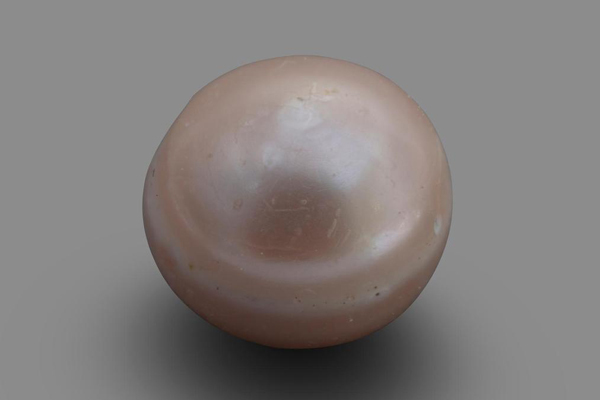- Egypt.The sarcophagi that waited four millennia at the doors of the pyramid
- University of Jaén. EL MUNDO journalist Francisco Carrión, awarded for disseminating Egyptology
Until rivers of black gold disrupted everything, the peoples of the Arabian Peninsula had pearl collection among their most lucrative businesses. An occupation whose first vestige, a natural pearl with 8,000 years old, has just appeared fortuitously in the excavation that pierces an island facing the Emirate of Abu Dhabi.
"During the archaeological excavation work on the island of Marawah, we were fortunate to find a natural pearl on the floor of one of the rooms," says Abdullah Jalfan al Kaabi, director of the archaeological unit of the Department of Culture and Tourism of Abu Dabi "Radiocarbon dating helped us place it between 5,800 and 5,600 BC , which makes it the oldest pearl discovered to date," he adds.
The small piece, pinkish, appeared while the project inspected a series of Neolithic stone structures that time had collapsed. Next to the jewel in a spherical shape, ceramic fragments, shell and stone beads and flint arrowheads were unearthed.
"The presence of pearls in archaeological sites shows that their trade existed since at least the Neolithic period," says Al Kaabi. "If we look at historical sources, we find more than one indication that Abu Dhabi was considered one of the main pearl centers, " adds the expert. In the sixteenth century, the Venetian merchant Gasparo Balbi already left in writing that the islands off the coast of Abu Dhabi were a paradise crowded with pearls.
Before the discovery of oil and gas, which in a matter of decades has transformed the arid landscape of the Emirates or nearby Qatar into exclusive 'skylines', the search for pearls was the main economic activity of their settlements . A buoyant business that ended abruptly in the early 1930s, because of the competition of pearl farms in Japan.
"This finding makes it clear that much of our recent economic and cultural history has deep roots that date back to the dawn of prehistory," says Mohamed Jalifa al Mubarak, president of the Department of Culture and Tourism of the emirate. Until now, the oldest pearl - 7,500 years old - had been unearthed at the Um al Quwain Neolithic site, also in the Emirates. "Marawah is one of the most precious sites and the excavations will continue in the hope of discovering more evidence of how our ancestors lived, worked and prospered," the official slides.
Sold in exchange for ceramics
According to the first inquiries, the pearl would have been sold as a jewel and probably steered the trade route that connected the region with Mesopotamia - the civilization that extended through vast areas of present-day Syria, Iraq and Iran - in exchange for pottery and others objects. In the excavation, near the beach, fish bones, turtles, dolphins and oysters have also been identified. "We have come to the conclusion that the population in this period was very familiar with the sea and considered it an important part of their daily life," says Al Kaabi.
The piece will be one of the 350 objects from 30 countries that will focus on the exhibition '10,000 years of luxury ', a journey through the history of opulence in the Middle East and the Mediterranean that will open its doors on October 30 at the Louvre museum from Abu Dhabi. Its rooms will house pieces of fashion, jewelry, visual art, furniture and design provided for the occasion by Chanel, Balenciaga, Christian Dior, or Hermès next to the collection of the consortium of Gallic public museums that is behind the Emirati installation, inaugurated two years.
The baptized as "Pearl of Abu Dhabi" - which will be permanently exhibited at the Zayed National Museum, still under construction - will shine among a selection of artifacts that record the history of excesses, from ancient civilizations and the cult of the divinities until the industrial revolution and the massive consumption of luxury goods. "What we are looking for is to explore the connection of Humanity with luxury throughout times and cultures and through a broad approach, from ancient treasures to current haute couture," advances the director of the Emirati branch, Manuel Rabaté.
According to the criteria of The Trust Project
Know more- science
- Science and Health
In the Solar System Saturn surpasses Jupiter and becomes the planet with more moons: 82
Macron criticizes Greta Thunberg for suing France
Paleontology Dismantle the oldest case of deafness: 'Agamemnon' could hear

